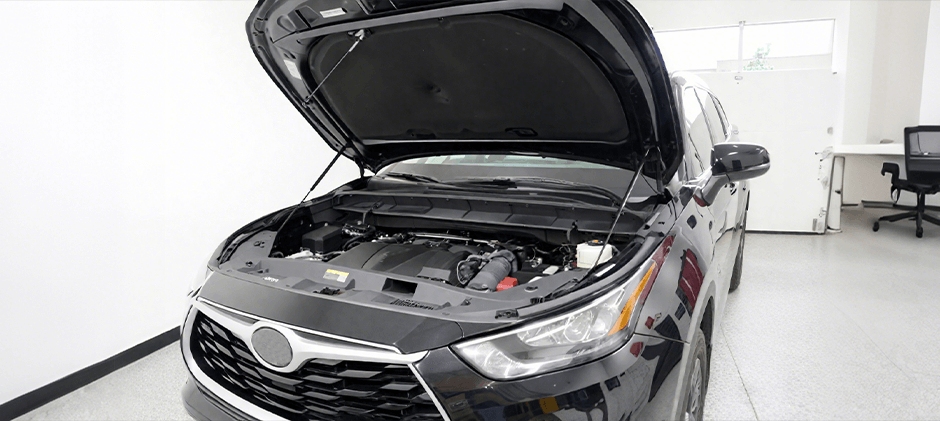“Unable to start” is common. There are many reasons why a vehicle can’t start, and it’s hard to guess which one is causing your drive to fail. Good thing there are diagnostic codes to find the source of the failure. For example, the Toyota P1604 code is linked to a startability malfunction.

What Is the P1604 Toyota Error Code?
Diagnostic trouble code (DTC) P1604 stands for “Startability Malfunction”. Simply, this code is set when the Toyota vehicle’s Engine Control Module (ECM) detects that the engine is not starting or has been starting for too long.
It should be noted that P1604 is usually an information code. It tells you what happened (failed or difficult start), but not why. You will usually see it together with other error codes, which can give more details about the underlying issue.
Common Symptoms of Toyota P1604
When your Toyota shows a P1604 trouble code, you may notice one or more of the following symptoms:
- The check engine light is on
- The engine cranks but fails to start
- Extended cranking time
- The engine starts and immediately stalls
- Rough idle after starting
These symptoms all point to an underlying problem. Let’s explore what those problems might be.
Main Causes of P1604 Toyota Error
P1604 is a common trouble code. It can be triggered by any system that affects the normal operation of the engine, such as the electrical system, fuel system, or ignition system. There are a few common reasons.
Weak or Failing Battery
This is one of the most common reasons at the moment. The battery does not have enough power to start the engine with a strong, steady current. In addition, if the battery terminals are corroded or loose, they can also cause poor electrical connections, which can likewise cause a startability malfunction.
Fuel System Problems
The engine requires sufficient fuel to start. Common fuel system failures include:
- Failing fuel pump
- Clogged fuel filter
- Dirty or clogged fuel injectors
Ignition System Issues
For the fuel to combust, it needs a strong spark at the right time. A problem within the ignition system can prevent this.
- Worn-Out spark plugs
- Faulty ignition coils
- Damaged ignition wiring
Faulty Engine Sensors
The ECM (Engine Control Module) relies on data from various sensors to manage the engine. If a key sensor fails, the ECM may not get the correct information. The most important sensor during startup is the crankshaft position sensor, which tells the ECM the engine’s speed and rotation position.
Other Potential Causes
Although less common, other issues can also trigger a P1604 code:
- Vacuum leaks
- Immobilizer system fault
- Faulty ECM
How to Diagnose the Toyota P1604 Code?
Scan for All Trouble Codes
The first step is to read all the trouble codes with an OBD-II scanner, not just P1604, but to see if there are any other problems. Tips like “crankshaft position sensor fault code or too thin fuel system” can provide you with important clues.
Check the Battery and Charging System
When the vehicle stalls, the battery voltage shall be measured with a multimeter, and the healthy battery voltage shall be ≥12,6 volts. Start the car for retesting, and the voltage should be 13.7–14.7 volts, indicating that the alternator is normal. Also, check the battery terminals for corrosion and make sure the connection is firm.
Inspect the Fuel System
Turn the key to “ON” gear (do not start the engine) and listen to see if there is a slight buzzing sound from the rear of the car—that is the fuel pump at work. If no sound is heard, the problem may lie with the fuel pump or its relay. If you want to be more accurate, the mechanic can use the fuel gauge to measure the rail pressure.
Examine the Ignition System
A visual inspection of the spark plugs can reveal a lot. If they are black with soot, covered in oil, or have worn-down electrodes, they are due for replacement.
This systematic way works well for many Toyota vehicles. If you are not comfortable performing these checks, it is best to consult a professional.
How to Fix the P1604 Toyota Error?
Once you’ve pinpointed the cause, the fix is often straightforward. The solution directly corresponds to the problem you discovered during diagnosis.
- Replace or charge the battery.
- Replace a fuel filter, clean the injector, or install a new fuel pump.
- New spark plug, ignition coil, or wiring repair.
- Replace air filters, clean throttle bodies, and recalibrate MAF sensors.
- Reset the code with an OBD-II scanner after repair. If it comes back, further diagnosis is needed.
Conclusion
Dealing with the Toyota P1604 isn’t easy, especially if you’re not familiar with the fuel system. Consult a professional if unsure.
When you locate the issue—whether it’s a worn spark plug, a clogged air filter, or a bad fuel pump—FridayParts has high-quality aftermarket parts that fit your Toyota models. Browse our one-stop shop, fix that P1604 code now!
FAQs
Is P1604 Toyota dangerous? Can I drive with the Toyota P1604 code?
The code itself isn’t immediately dangerous, but it could cause your car to stall or even fail to start, trapping you in an unsafe area. So it’s best to resolve the issue as quickly as possible.
Can cold weather cause P1604 on a Toyota?
Yes. Cold weather will obviously weaken the battery’s ability to start. The oil will also thicken, making starting the engine more difficult. This may trigger the P1604 trouble code.
Is a P1604 code expensive to fix?
The cost is based on the specific problem. Cleaning the battery terminals or replacing the air filter has just a little cost. A new battery will cost $150 to $300. Replacing a fuel pump is higher, ranging from $400 to over $1,000, depending on the model. Labor costs must also be considered.
